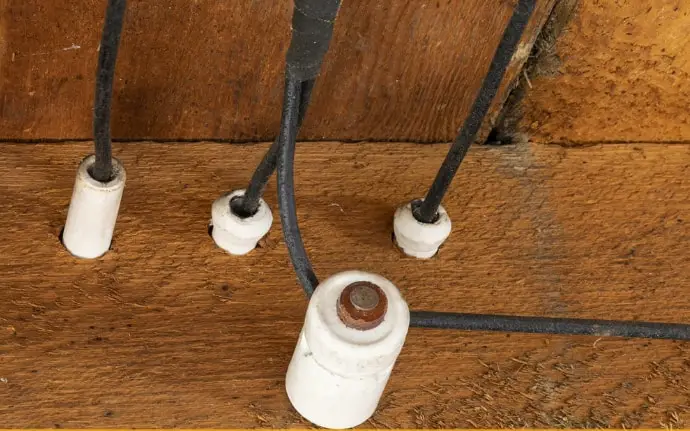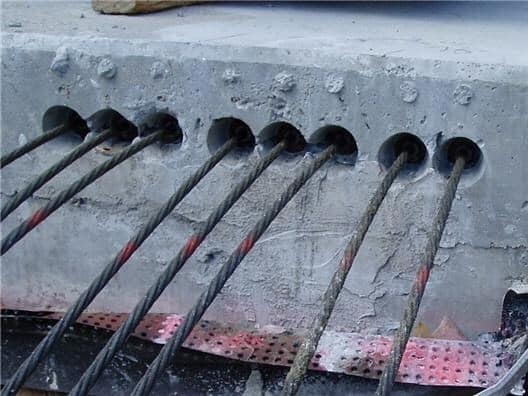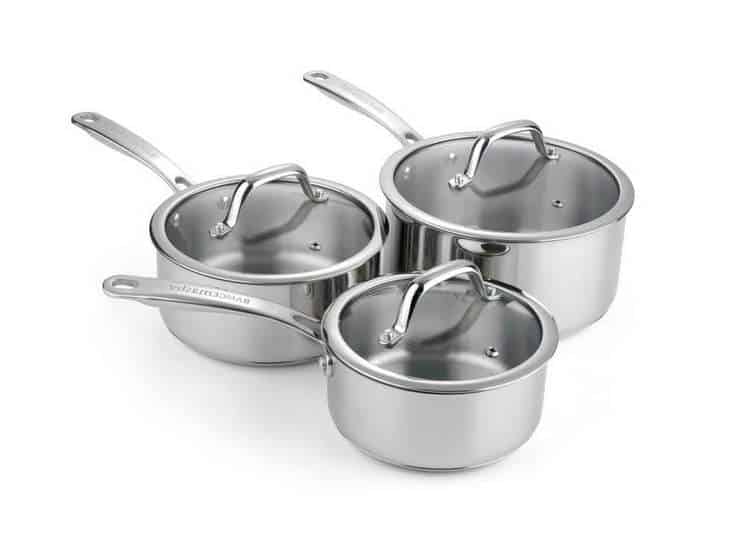Knob and Tube Wiring Advantages and Disadvantages

Knob and tube wiring is electrical wiring for home. This wiring system may be installed in older homes constructed between the late nineteenth and mid-twentieth centuries.
There is no new knob and tube wiring installation for a new building or home. Even though it is considered an old system, the wiring system itself is safe. The important thing is to get your electrical wiring system tested by a professional. This is to make sure that it is still in good operational condition and meets local safety requirements and standards.
It’s possible that knob and tube wiring in some houses is not safe anymore. Underlying wear and tear over time, a few decades of problematic repairs, and our ever-increasing need for more power will put an excessive amount of strain on these old wiring systems.
What is Knob and Tube Wiring?
It is easy to distinguish old knob and tube wiring in comparison to modern wiring. If you look around your attic, basement, or beneath your floorboards, you could find distinctive signs of an old knob and tube wiring. It uses insulated copper wire within porcelain or ceramic knobs and tubes.
It was the standard for wiring houses because of its relatively low cost compared to other options at the time. Back then there were other wiring systems such as armored cables and conduits, which could cost two to three times more. Knob and tube wiring were developed and manufactured in an era when the electrical industry was still in its infancy. We did not yet have the high-performance synthetic insulating materials for cables that we now have.
Although current cables are made up of numerous layers of flexible plastic, older knob and tube conductors are often made up of single wires wrapped in a fabric sheath. The conductor is supported along its entire length by a porcelain knob nailed or screwed to the wooden structure of the building.
A proper installed knob and tube wiring system may be safe in and of itself. Federal and local restrictions prohibit use in new construction due to safety measures.
When Was Knob and Tube Wiring Installed?
Knob and tube wiring systems were the go-to wiring method for households back then. It was used for lighting or living room lamps from 1880 to 1950—and even as late as the 1970s.
In the modern world, things like TV and air fryers were added to our homes, and so the knob and tube wiring system was no longer sufficient. Breaker boxes are now often used in homes that can withstand 100 amps, which is far more than what the original electricians designed the system to handle.
Knob and Tube Wiring Facts
- The wiring system is not dangerous by itself. The problems of this system come from its aging, poor modifications, and many circumstances where the wires are encased in building insulation.
- Due to the absence of a ground wire, it cannot be used to power any three-pronged appliances. Electrical grounding is essential for safety reasons.
- Lack of insulation over time is a common problem with rubber used to cover wires in older homes. With Knob and Tube wiring, one of the key issues is that old, broken out insulation is a major concern.
- Because of this, it is not necessary to remove it from the code.
- Different jurisdictions regard it differently. Depending on where you live, you may need to remove it from all accessible spots around your house. Another option is to make an inspection to ensure your safety.
- Knob and tube wiring does not meet current electrical safety standards as it is designed for light electrical loads and easily overloaded in a modern home with multiple devices often operating simultaneously.
- There are no new constructions allowed to have it in them.
How to Tell If You Have a Knob and Tube System
Knob and tube wiring is quite simple to recognize. They are visually different compared to modern cabling like Romex. You should be able to find the ceramic components in your attic or basement. The electrical cables are wrapped around the knob to provide support, while the tubes cover the exposed wires.
The fact that you don’t see it right away does not mean it’s not there. It’s possible that the previous owners covered it up, or it was hidden elsewhere. The only way to be certain is to drill small holes or use a microscopic camera to inspect behind the panels or your walls.
How Knob-and-Tube Wiring Works
This old wiring system’s work is actually quite simple. Knob and Tube Wiring consisted of singular insulated copper wires running inside walls or ceilings. In order to keep them in place, they went through beams and punched holes in the protective porcelain insulating tubes.
Ceramic pipes were inserted into holes drilled in wall posts or floor slabs, and wires were channeled through them. Ceramic tubes were also sometimes used when wires were crossed to protect themselves in case the top wire breaks and falls onto the bottom wire. Ceramic dowels, which were in the form of blocks, served the same purpose as the handles, except that the dowels were usually used in places where the wiring was installed to the surface.
To avoid the possibility of a fire, porcelain knobs were used to keep the wire several inches away from the wood walls. Ultimately, knob and tube wiring was replaced by internal wiring systems due to the high installation cost compared to using power cables that combined both power circuit conductors in one section (and which later included grounding conductors).
The benefits or advantages of knob and tube wiring are outlined below, however the negatives nearly usually exceed them.
Advantages of Knob-and-Tube Wiring
1. Higher Ampacity Compare Other Home Wiring
One of the advantages of old knob and tube wiring over modern wiring is that the copper wire used is typically larger gauge and larger in diameter. As a result, the wiring has more ampacity than wire systems with the same gauge. Because the hot and neutral wires are separated by 4 to 6 inches. With enough distance between, allowing the wires to easily pass around heat into free air.
2. Less Likely to be Punctured
Knob and tube wiring are less likely to be punctured by sharp objects like nails. Their wires are separated and detached. This is different with modern wiring like Romex where cables are put in one framing.
3. The porcelain parts have a very long life.
Porcelain insulators are exceptionally durable and have a long lifetime, providing excellent insulation protection. The porcelain knobs help prevent overtensioning of the wires during installation, enabling the wires to stay trouble-free for an extended period of time.
The porcelain knobs are used to hold the wires in place and prevent them from coming into contact with combustible surfaces. The pipes pass through the holes in the timber beams, and the knobs are used to route the cables over the timber beams, preventing them from coming into contact with the frame.
4. Low Cost Prices
When we compare the price, knob and tube wire was far less costly to install than its rivals. It will cost you less two and three times. In the early days of the electrical wiring industry, it was the materials that were the most costly. Labor costs for electricians increased substantially quicker than material prices for electrical components as electrical systems got more complex. This is also to cover the labor cost of trained electricians who install the wiring.
Back then, installation for knob and tube wiring was highly labor demanding jobs. This shift in labor vs. materials led knob and tube installation costs to surpass rivals and was one of the primary reasons for its decrease in popularity.
5. Superior to other types of wiring
Knob-and-tube wiring is often better than contemporary Romex wiring in terms of installation quality. K&T wire installation needs more expertise than Romex wiring installation and, as a result, it is seldom installed by untrained workers. As a result, the quality of craftsmanship was typically much superior than what we have now.
Disadvantages of Knob-and-Tube Wiring:
1. Difficult to Insulate Your Home
Knob and tube wiring must be run in open air. It uses open air to dissipate heat. Once you have insulation blown in or installed around it in your walls, it will surround the old wiring. The air can no longer dissipate heat the way it was intended. The heat can be intensified over the time and potentially becomes a fire hazard.
If you need your house to be insulated, the insulation company needs to inspect your house first. They will require a technician to check and examine your house for all electrical wiring. He will need to confirm there is no active knob and tube wiring. Then you need to fill out a form that says your house is free of active knob and tube. Once that’s signed off you can move forward with the insulation work.
Now if you happen to have an active knob and tube wiring, then you can’t do the installation until the knob to wiring is actually completely replaced.
2. Insurance Companies Will Not Insure Your Home
Some may find it difficult to get insurance on a property with knob and tube wiring. Major insurance firms will not insure buildings or homes that still have this old wiring installed. This is mainly due to potential safety and fire hazard.
So you’re left with the choice of either replacing the wiring to keep with your same insurance company or find one of the few insurance companies left that will still insure the home. But guess what, that insurance company is definitely going to charge you a premium. So you’re left with the choice: do I replace it or do I pay the premium with a different company.
3. No Grounding
Knob and tube wiring is a wiring style that consists of only a single hot wire and a single neutral wire. This type of wiring does not contain a ground wire, which means that it cannot power the 3-pole electronics that are used in most cases today. It is ungrounded!.
Lack of a grounding conductor poses a huge risk to your house and your personal safety.
In addition to making your electrical system safer, grounding your wiring system may also protect you against power surges, which are a common occurrence in homes. In addition, some electronic devices need a ground to function properly.
However, some homes may still have outlets that are grounded through a separate cable to the nearest metal waterline. As the plumbing system might change, this is not necessarily a stable technique of providing a grounding line.
4. Insulation Becomes Very Brittle and Easily Breaks Down Over Time
Knob and Tube wiring consists of insulated copper wire that passes through porcelain or ceramic knobs or tubes. The insulation was actually a rubber style or rubber based insulation wrapped with cloth, also known as cloth wiring. Over time this insulation becomes brittle and can flake off.
When the heat from light bulbs is going into that light fixture box over years and decades, it heats up and breaks down. Where it gets even worse is a lot of people take 100 watt light bulbs and put them into light fixtures that should only have 60 watt bulbs. If you’ve ever felt the heat that comes out of a 100 watt incandescent or halogen light bulb, it’s pretty intense. That heat goes right into the wiring compartment, and it literally cooks the wires.
Now it’s an absolute nightmare to repair it because you basically don’t have to replace the wire to it because it’s just completely gone.
5. It’s Old Wiring and Wasn’t Meant to Last Long
Knob and Tube Wiring was first put in the homes in the 1880s up to 1932. And believe me but this year it could be at its oldest 140 years old.
It’s amazing that it’s lasted this long, and it’s really a testament to the electricians who installed it all those years ago. But it certainly serves its use and it’s time to move on from it and get a safer grounded system in your home.
6. Unsafe and Improper Modifications

With knob and tube wiring, unsafe changes or modifications are significantly more prevalent than with Romex and other current wiring methods. In part, this is due to the fact that the wiring for the knobs and tubes is so ancient that there have been more opportunities for incorrect alterations.
If no one messes up the original wiring, you may have nothing to worry about, but this is not always the case. Compared with Romex and other modern cabling systems, unsafe modifications in knob and tube cabling systems are more common. This leads many homeowners to believe that they can replace the wires themselves.
7. Increased Power Usage
Since the days of knob and tube wiring, the power requirements of houses and other structures have evolved drastically. Because there were few electronic devices, most of these circuits were utilized for lights. A home with 10 amp knob and tube wiring and a 60 amp electrical system just can’t keep up with the needs of today.
Most houses now need 150 to 250 amps of service capacity, and if you still have knob and tube wiring, it was most likely incorrectly upgraded and presents a fire or electrical danger.





